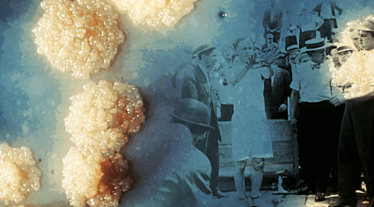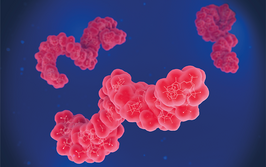The Survival Artists
We know mycobacteria can survive in the absence of oxygen. But what is their secret?

Mycobacterium tuberculosis is a pathogen known to survive in hostile conditions, but until recently, its ability to survive without oxygen has not been well understood. A recent study from researchers in New Zealand, Germany and the US has managed to shed some light on the subject (1). Up to a third of the world’s population may have a latent TB infection (2), and the researchers hope that discovering mechanisms that allow mycobacteria to survive may lead to new drug targets for TB.
Michael Berney, assistant professor at Albert Einstein College of Medicine, NY, and one of the study’s lead authors, tells us more.
What motivated your research?
Mycobacteria are survival artists; they need oxygen for growth, but they’re able to survive months or even years when it’s exhausted. M. tuberculosis can survive and persist in human lungs in granuloma, an environment known to be oxygen deprived. Likewise, many mycobacterial species isolated from the environment, such as the soil bacterium M. smegmatis, have been shown to survive long-term oxygen deprivation. Having an interest in mycobacterial metabolism and energetics, I wanted to pursue this metabolic conundrum: how does an obligate aerobe – a bacterium that cannot grow without oxygen –survive hypoxia?
Were there any surprises?
We found that M. smegmatis encodes three different hydrogenases – enzymes that are commonly found in anaerobic or facultative anaerobic organisms. Why would an obligate aerobe carry three of these enzymes? We learned that M. smegmatis uses these hydrogenases to produce hydrogen in the absence of oxygen and is able to quickly recycle the produced gas as soon as a suitable electron acceptor (for example, oxygen or fumarate) is available. This gives the bacterium a high degree of metabolic flexibility, as well as the ability to rapidly adapt to changing conditions.
In addition, we could demonstrate fermentation in a mycobacterium, which suggests that M. smegmatis can switch between fermentation, anaerobic respiration and aerobic respiration.
What challenges did you face?
The main challenge was to experimentally dissect hydrogen consumption and production by the bacterium. In order to determine the contribution of each individual enzyme to hydrogen metabolism, we used genetic engineering to delete hydrogenases in the genome of M. smegmatis and create single, double and triple mutants.
With these strains in hand, we faced another challenge: measuring hydrogen consumption and production at extremely low concentrations (sub-atmospheric levels). We first used a hydrogen sensor, but these experiments were limited as we could only measure relatively high hydrogen concentrations. There are only a handful of groups in the world who can measure hydrogen at such low concentrations, using ultrasensitive gas chromatography. Fortunately, we were able to collaborate with Ralf Conrad of the Max Plank Institute in Germany, who has the necessary instrument and expertise.
What’s next?
There are two main questions that we are currently examining:
- Why are mycobacteria able to ferment and respire anaerobically yet are unable to grow without oxygen? It is very puzzling that mycobacteria are equipped with the tools to ferment and respire anaerobically, yet are unable to grow under anoxic conditions.
- Do pathogenic mycobacteria, like TB, also rely on hydrogen metabolism or any other fermentative process to survive and persist in their host?
- M. Berney et al., “An Obligately Eerobic Soil Bacterium Activates Fermentative Hydrogen Production to Survive Reductive Stress During Hypoxia”, PNAS (2014). doi: 10.1073/pnas.1407034111.
- World Health Organization – Tuberculosis fact sheet (2014).
I have an extensive academic background in the life sciences, having studied forensic biology and human medical genetics in my time at Strathclyde and Glasgow Universities. My research, data presentation and bioinformatics skills plus my ‘wet lab’ experience have been a superb grounding for my role as an Associate Editor at Texere Publishing. The job allows me to utilize my hard-learned academic skills and experience in my current position within an exciting and contemporary publishing company.




















